We choose battens for the baths
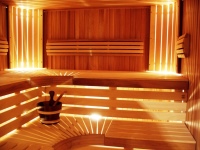
One of the most popular finishing materials - this batten. On the domestic market there are often its varieties of hardwood: aspen, linden, alder, ash. No less in demand are coniferous options: cedar with unsurpassedly beautiful shades and inexpensive pine. Consider what kind of cladding is best suited for the bath and sauna, what features should be considered when cladding the different areas: pre-bath, shower and steam room.

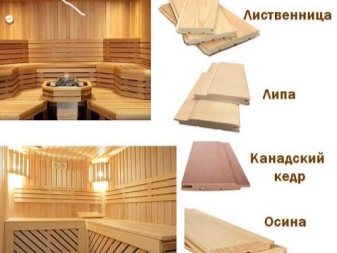
Features
Clapboard is an excellent finishing material for internal and external design of various premises. Represents recycled wood in the form of neat thin panels-bars. Wooden panels are connected by the principle of "tongue and groove". During installation, a projection (tongue) goes in the recess (groove). Boards are suitable for creating bath furniture: benches, stools, chairs. Often used for the manufacture of appropriate accessories: tubs, headrests, lampshades, ladders.
Felling for the bath is characterized by environmental friendliness, durability, ease of installation and inexpensive price. It has thermal insulation properties, is resistant to high temperatures, moisture and looks very aesthetically pleasing.
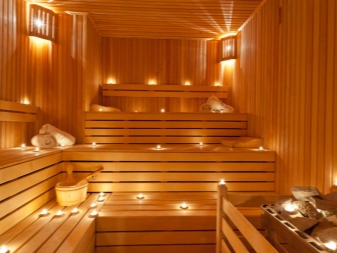
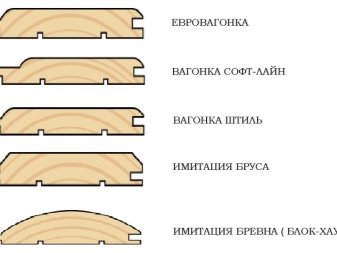
Overview of types
Manufacturers offer several types of cladding, which differ from each other in shape, size and mounting features, depending on the presence or absence of the chamfer.
- Standard linings. Manufactured in accordance with GOST regulations. More suitable for cladding the outside of the bath or interior finishing of the pre-bath, as on the front surface is allowed the presence of a thin layer of nap. The "tongue-and-groove" fasteners are relatively shallow, so if a large amount of moisture can deform the panel.
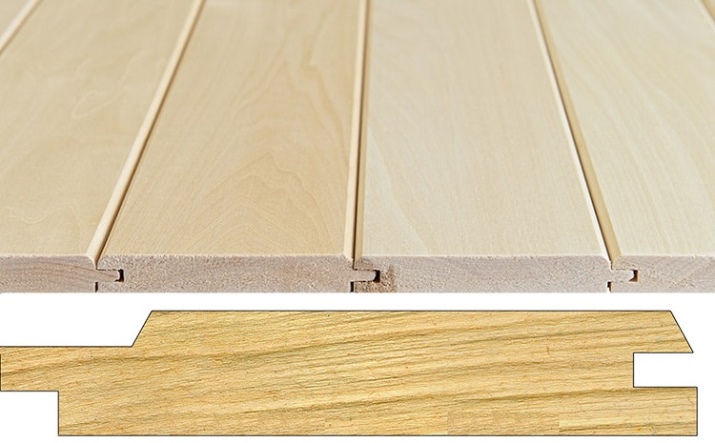
- Euro linings. It is characterized by a higher-quality processing, is made according to the international standard DIN 68126. Designed for interior work indoors. It has additional grooves on the back side that contribute to the removal of accumulated moisture and prevent rotting of the material. During installation, you can see the seams, which give a kind of charm of the room.
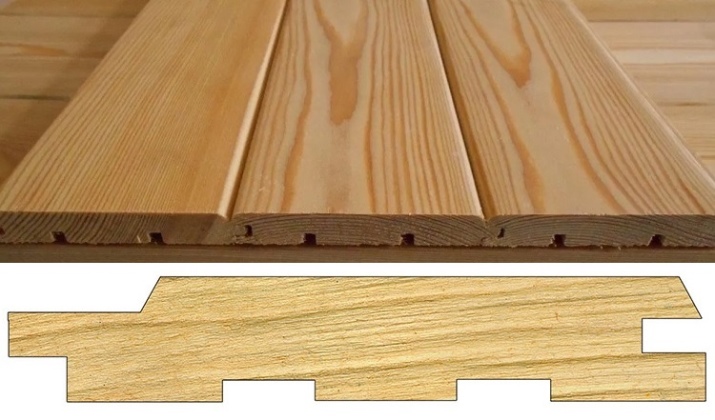
- Double-sided linings. Both sides of these panels look the same, so it is easy to install, even for inexperienced craftsmen. It is an excellent option for baths and saunas of large areas, where it can be used to build thin partitions, separating the zones.
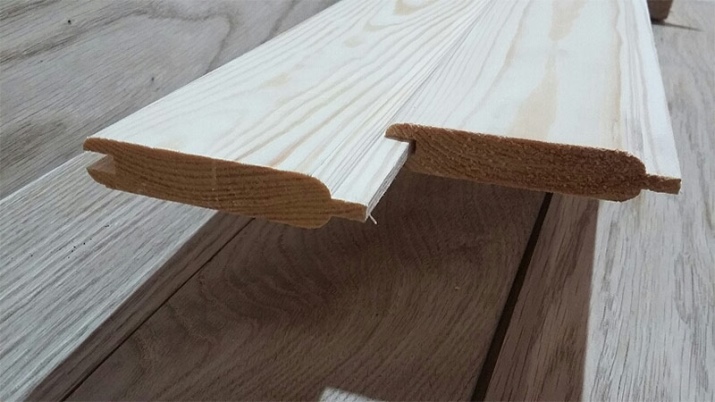
- Felt "Stille". Unlike other types has a greater thickness, reminiscent of imitation beams. More is used for wall finishing.
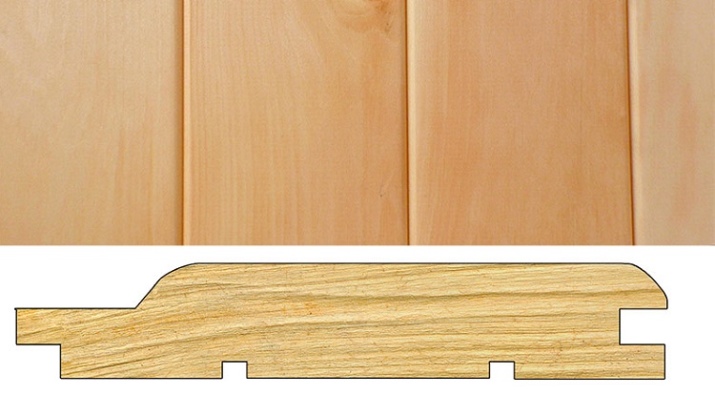
- Landhouse" cladding. These panels are characterized by increased smoothness due to additional polishing. As a result, peculiar patterns are formed on the wooden surface.
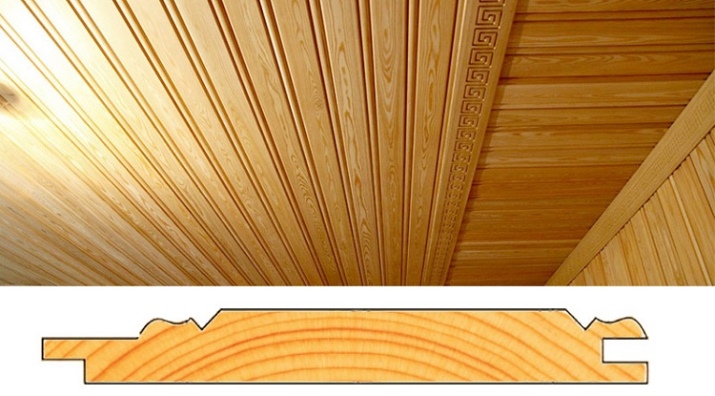
- American style linings. Has a smooth sloping transition from the stud to the middle of the outer part, due to which the mounted panels resemble a siding finish.
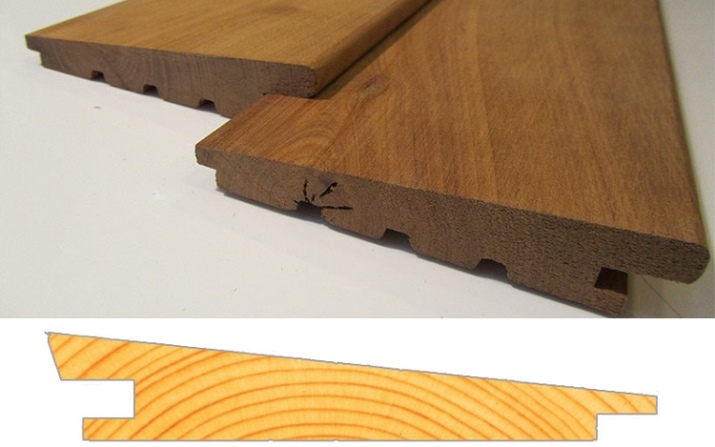
- Cladding "Blockhouse". The outer side is characterized by a rounded convexity. After assembling the wall imitates the logs. Suitable for internal and external finishing of walls.
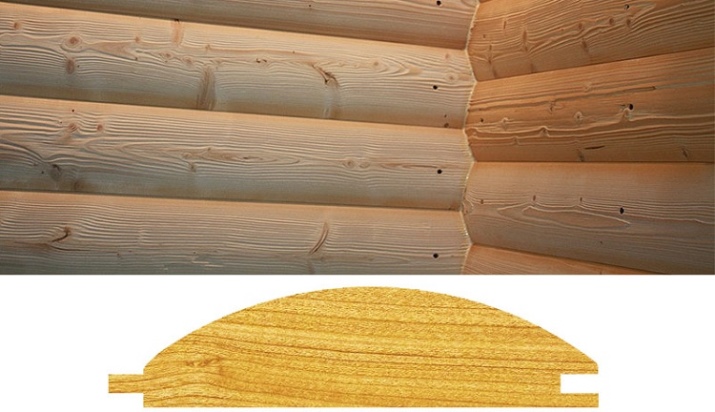
Dimensions
Dimensional parameters of standard battens and eurowoods are somewhat different. They are determined by the width, thickness and length. In accordance with the requirements of GOST size parameters of domestic finishing material are:
- thickness - from 12 to 40 mm;
- width - from 76 to 150 mm;
- length - from 30 cm to 6 m;
- thorns - 4-5 mm.
Given the peculiarities of wood, manufacturers themselves determine the parameters of products or make them to specific customer requirements, which vary within certain limits. Very often on sale you can find materials 20 mm thick, 30 mm, 35 mm, 40 mm, width - 120 mm, 125 mm, 130 mm, 140 mm.

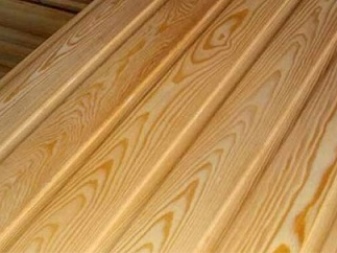
Euro linings are always produced in exact parameters:
- thickness - 13, 16, 19 mm;
- width - 80, 100, 110, 120 mm;
- length - 50 cm - 6 m;
- spines - 8-9 mm
The choice of material thickness depends on where the cladding will be made. In the design of internal walls are suitable instances of thickness from 12 to 16 mm. For cladding exterior sides you should give preference to material with a thickness of more than 19 mm.
The width of the linings is selected depending on the design ideas for the decoration. But it is worth considering that the most resistant to wear is narrow strips, wide - more prone to deformation.
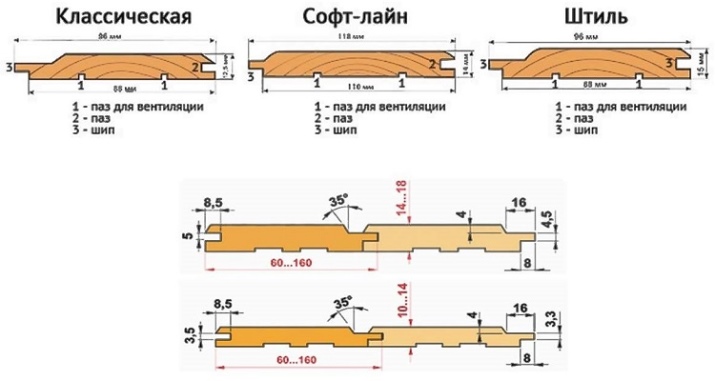
The biggest choice manufacturers offer the length of the facing boards. It is from it depends on the immediate purpose. For sheathing small size areas, interior trim roof overhangs, masking of communication pipes will do a short version. Often they are made from waste basic material, and the price of them will, accordingly, less. Long laths will always find use in all kinds of finishes, so it is more practical to buy them.
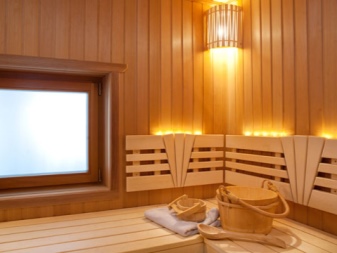
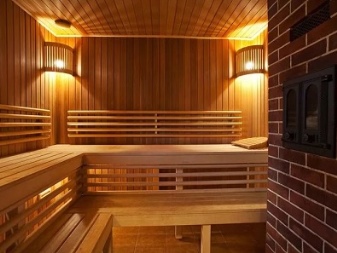
What is better to choose?
On the market there are laths made of coniferous and hardwood. For exterior finishing, the first option is more suitable. The resins and essential oils included in the composition prevent the formation of fungus during changes in atmospheric temperatures, including high humidity in the autumn and spring period. For interior finishing of saunas and baths you can choose samples of coniferous wood, subjected to the procedure of desmolation, which prevents the allocation of resin under the influence of high temperatures.
Often such felling is used for cladding pre-baths, as the smell of pine holds for a long time, filling the room with a naturally pleasant aroma.
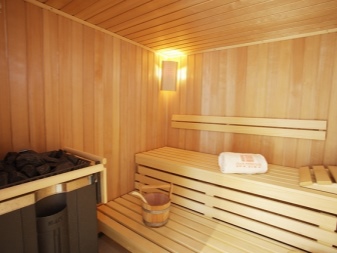
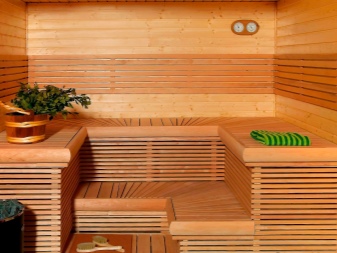
Let's consider the main characteristics of the varieties of coniferous wood linings.
- Spruce. It has a high degree of moisture resistance, good thermal insulation properties and beautiful texture. Unlike other conifers, spruce has few knots, so the processing results in a smooth texture without marked divisions. It can decorate the room both outside and inside.
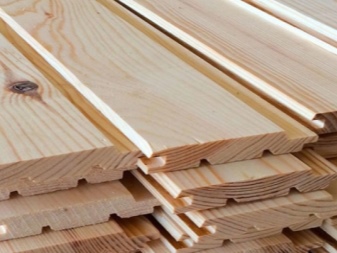
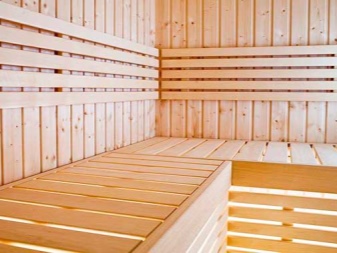
- Pine. Despite the beautiful appearance compared to other species, it costs much less. The low cost is justified by the low density of the wood, which is prone to damage in the form of chips and scratches. In addition, boards made of pine, even after processing for a long time to release a drop of resin, so they are not appropriate to use inside the premises. It looks impressive in the exterior cladding, but requires periodic varnish coating to avoid darkening.
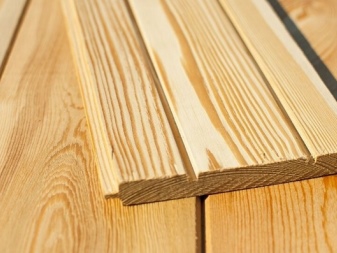
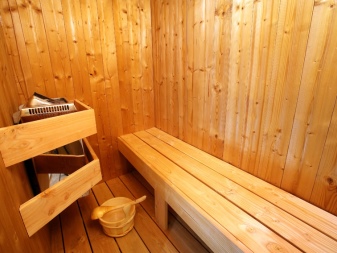
- Cedar. Is an excellent finishing material. Thanks to the unparalleled properties of cedar, cedar linings will last a long time. In addition to strength and resistance to temperature changes, it has repellent properties for pests: rodents and insects. In the domestic market there are 3 types of material: Siberian, Far Eastern and Canadian cedar. The wood of Siberian cedar has a pale pink hue and emits a delicate aroma enriched with phytoncides. Fretwork made of Far East cedar is characterized by beige tones and a faint odor. Finishing material from Canadian cedar comes in different shades: from rich yellow to red-brown, the fragrance of the wood is almost not felt. Any cedar battens over time is slightly darker, while retaining its natural beauty. It does not need any additional treatment except for a thin layer of clear varnish.
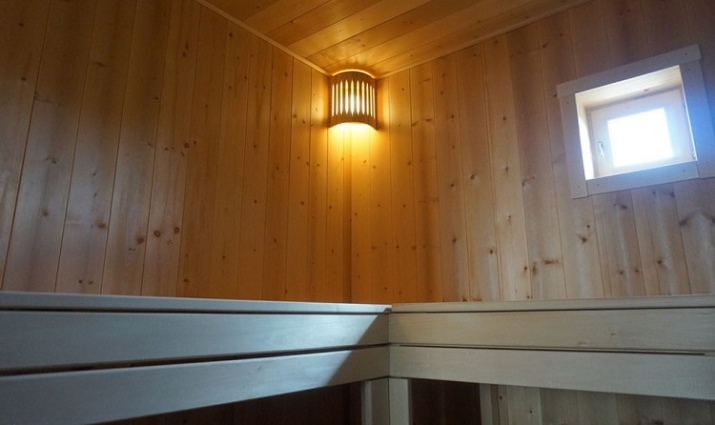
- Fretwork made of larch. It is very durable, it is not subject to deformation under high temperatures and moisture. It is characterized by an abundance of colors: from pale golden to dark brown. Over time does not darken, but to preserve the natural shade needs to be painted with varnish.
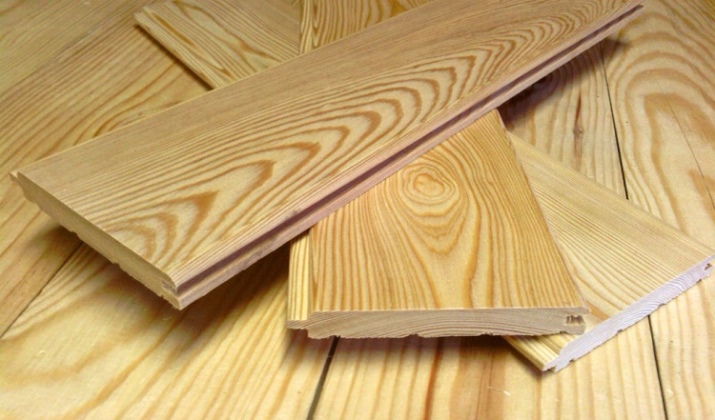
Felling made of hardwood is acceptable for interior and exterior finishing.
Deciduous wood does not emit resins and heats less, so it is the ideal material for the interior cladding of traditional Russian baths, where the temperature is kept at 45-70 ° C. Of the disadvantages it can be noted only that, compared to softwood, it needs more frequent treatment, as under the influence of temperature can begin to rot.
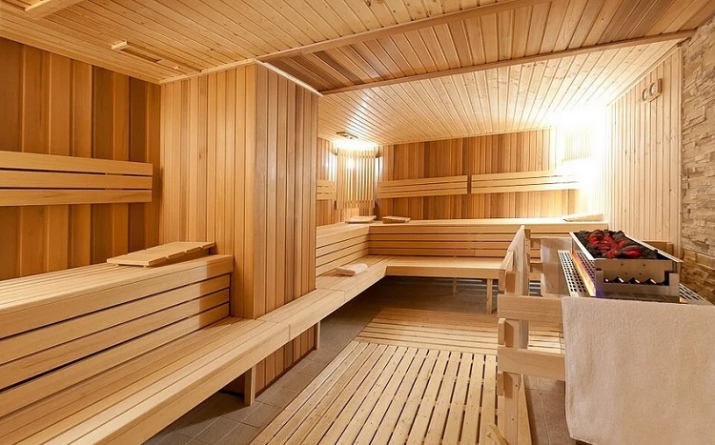
Let us describe the varieties of hardwood linings.
- Aspen. It is characterized by excellent thermal insulation properties, which for a long period keeps a comfortable temperature. Aspen linings have good density, are subject to few defects and are resistant to external influences when properly processed. It can stay unchanged for 5-7 years. It has a white shade that looks very effective when covered with lacquer.
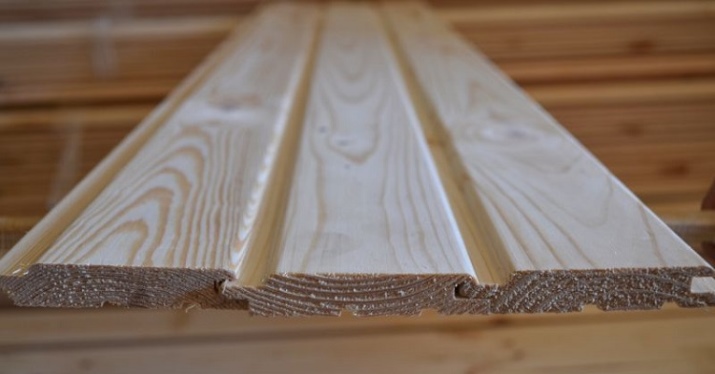
- Linden. The wood has a dense texture, so the possibility of cracks and damage is very minimal. The pleasant linden aroma is soothing and beneficial to the nervous system. The color range varies from white-pink to golden brown. For the finishing of baths, linden from the Caucasus is more in demand, as it is more malleable: perfectly bent, polished and dries quickly.
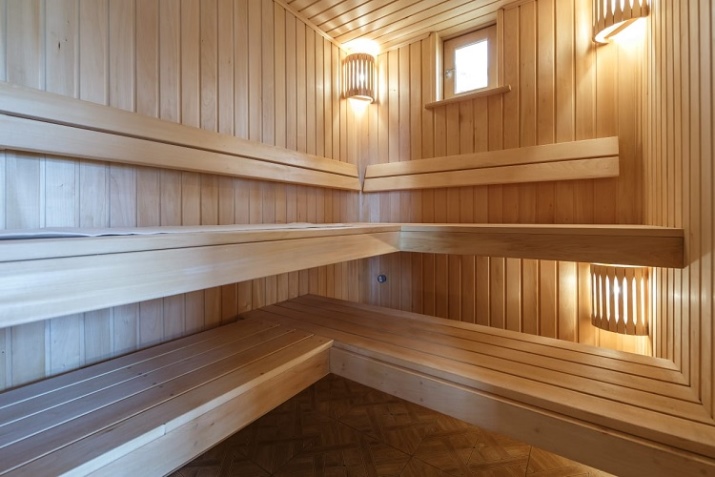
- Alder. Thanks to its beautiful chocolate shade, it looks aesthetically pleasing and luxurious. It has a high water-repellent effect, which prevents rotting and significantly prolongs its service life. It is advisable to use for lining walls and ceilings in the steam rooms. Alder tannins have medicinal properties and improve health.

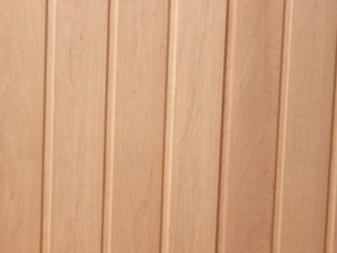
- Oak. Excellent qualities of oak give the material improved characteristics. Oak linings are resistant to high humidity, high density prevents the formation of any defects. The colors range from golden brown to dark brown. Bleached oak linings are more expensive. The paneled surface looks perfectly flat, the joints are almost invisible.
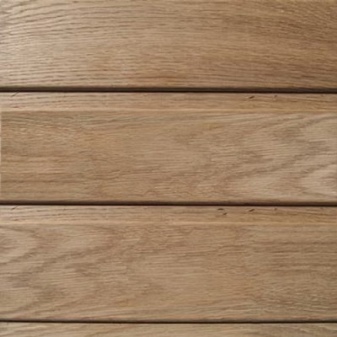
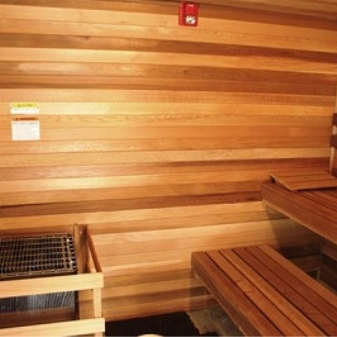
- Ash-tree linings. Characterized by a beautiful pattern and a muted matte sheen. On sale is often found plain ash-wood in gray and yellow-pink tones, which is suitable only for interior decoration. For the material is extremely undesirable contact with the soil, as this can lead to rotting. Thermo ash veneer can be used for facade cladding. The material is obtained by treating wood with hot steam, which changes its structure and makes it resistant to mold. Thermal ash has darker and richer shades, and on the strength is not inferior to oak wood, but differs more favorable price.
Let's dwell on the peculiarities of selecting battens for different sections of the bath or sauna.
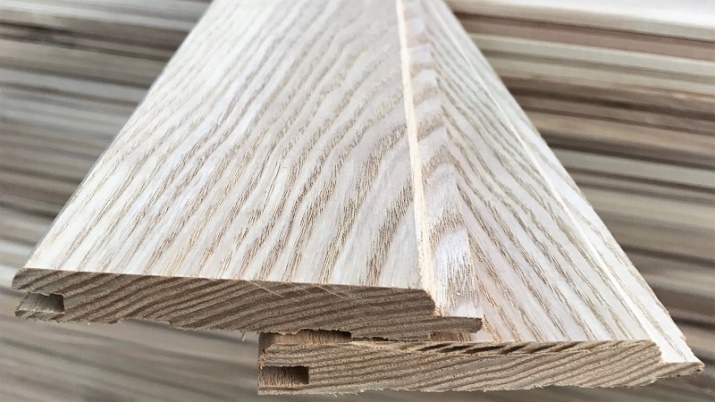
For the steam room
It is not uncommon for temperatures in the steam room to rise above 80°C, so it is important to choose a safe material. Cladding should be carried out only panels of hardwood, so that in the process of heating resin residues are not released. Raw materials should be even, smooth and well polished, should not have even the slightest knots. This is primarily due to the fact that knots are heated faster, which can lead to skin burns.
For the walls of the steam room optimal options are: lime, aspen, oak and alder. You can combine different samples for decorating the walls, ceilings and seats. Good look in the design of light walls made of aspen or linden in combination with dark benches made of alder.
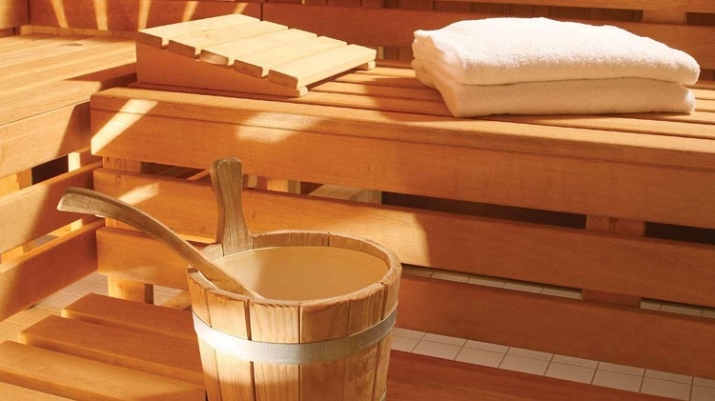
For the anteroom
It is impossible to imagine a Russian bathhouse without a pre-bath. It performs a double function: it prevents the entry of cold air and is a place to rest. Humidity in the pre-bath is much less than in the steam room, so for its finishing and will suit conifers: spruce, cedar, larch. Good options would be hardwood: ash, alder, basswood. Pre-bathroom of small size is better to cover the lining of light-colored lime, larch or ash.
Swanky look bathing rest areas of large areas, trimmed with brown cedar or alder felling, imitating beams or logs (varieties "Stihl", "Blockhouse").
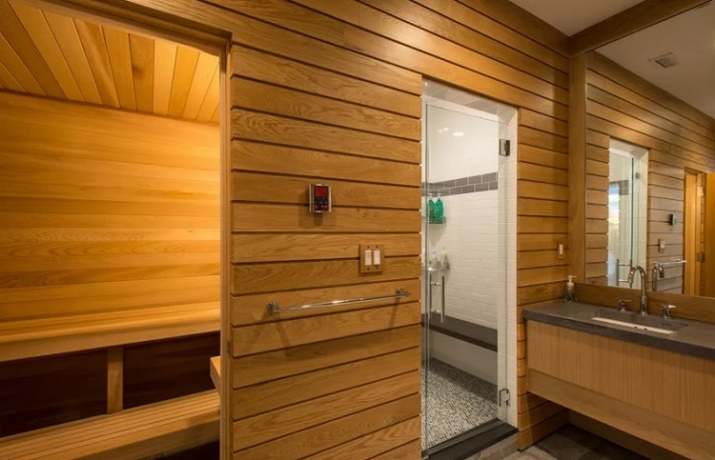
For the shower room
In the arrangement of small baths shower room is usually located in the washing room, close to the steam room, and therefore it is necessary that the batten was carefully treated with a protective layer of natural water-repellent varnish composition. For the room in question, panels made of lime, aspen and oak are ideal - they are less susceptible to high levels of humidity. Saunas usually assume a separate shower area, where the degree of heating is much lower, so when it is cladding you can use boards from conifers: spruce, larch, cedar.
Interior or exterior cladding corresponds to the traditions of this well-loved Russian bath. It does not only make the room aesthetic, but also has beneficial, in some cases therapeutic effect on the body as a natural ecological material that is safe for health.
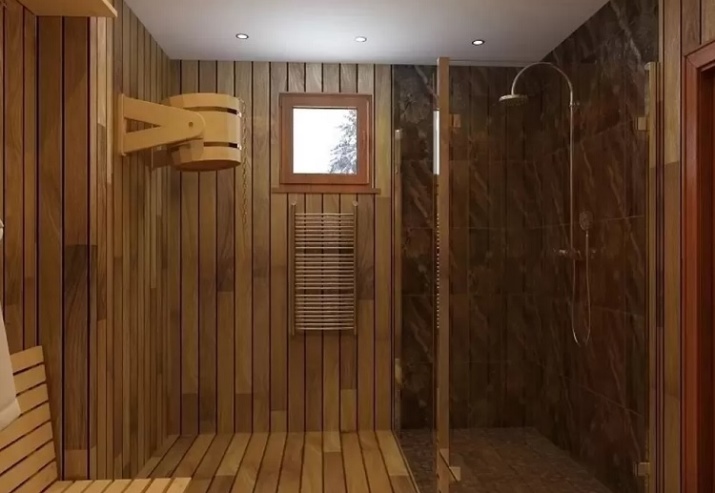
To learn how to choose the right cladding for the bath, see the following video.




